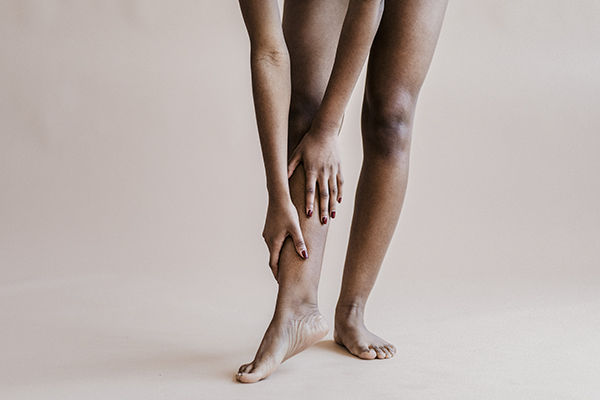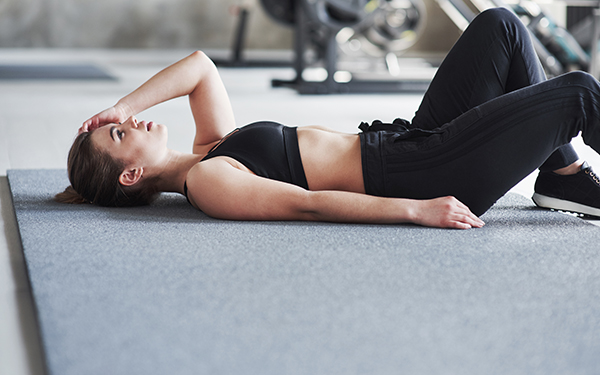Also referred to as knock knees sometimes, genu valgum is a common condition among small children between the ages of 2 and 7.
Most children develop this lower leg deformity as a part of their natural growth development.
By the time the child reaches the age of 7 he or she begins to outgrow their knock knee condition, and they’ll notice that their legs begin to straighten out on its own without treatment.
However, that’s not always the case with some people, as some children will notice that their genu valgum condition persists well after they reach the age of 7.
Genu Valgum in Adults
As you can imagine, having knock knees in adulthood can cause a lot of discomfort and pain.
Adults with genu valgum will have to seek treatment in order for their knees to realign properly.
Before you can treat genu valgum effectively you’ll have to figure out what’s actually causing the problem.
What Causes Genu Valgum in Adults
There are a number of different factors that can cause genu valgum in adulthood.
Some of the most common causes of genu valgum in adults include the following:
- An imbalance in your lower body muscles.
- Weak or overly tight quadriceps, hip flexors, or hamstrings.
- Any type of lower leg injury that causes your knees to turn inward.
- Knee arthritis can also contribute to your knock knees because it causes your joints to lose its ability to keep your knees aligned properly.
These are some of the most common causes of genu valgum above.
Everybody is different and it may take an experienced orthopedist to diagnose your condition to find out what exactly causing your knock knees.
Diagnosing Genu Valgum
A few of the most common ways doctors go about diagnosing genu valgum include:
- Conducting a standing alignment X-ray.
- Checking your medical history to see what other conditions you’ve experienced before, and if they’re related.
- A physical examination where the doctor will need you to stand up straight and do certain movements to see which area of the knee is causing the inward curve.
After performing these steps your doctor will make a decision on what could be potentially causing your genu valgum and provide you with advice on how to treat it effectively.
Genu Valgum Treatment
Most doctors will recommend surgery such as osteotomy, which involves cutting a piece of the bone in your knee and then re-inserting an instrument to help realign the leg.
However, surgical procedures such as osteotomy are expensive and can lead to side effects that can be even worse than the knock knee deformity.
With that being said, the best way to treat genu valgum is to perform certain exercises that will gradually strighten out your legs.
Best Genu Valgum Exercises
Some of the best exercises for genu valgum will involve strengthening the muscles in your lower body such as hips.
Check out these 2 genu valgum exercises that are guaranteed to help you fix knock knees naturally and improve the inward curve in your leg.
Single Leg Band Exercise
This stretch will require you to have an exercise band to help keep your hips engaged and make them stronger.
To do this exercise do the following:
- Start off by placing the resistance band around your ankle and then stand up straight.
- Now, go ahead and place the other end of the resistance band around a secure object nearby like a chair, or workout bench.
- Next, start stretching the resistance band pushing your leg outward to your side.
- Once you’ve gone as far as you can go with the resistance band go ahead and hold this position for at least 5 seconds and then return to the starting position.
Repeat this simple exercise with the other leg, and make sure you do about 10 reps with each leg.
Lunges
Another one of the best knock knee exercises to treat genu valgum are lunges.
Lunges are a great exercise for genu valgum because it works your hip flexors and hamstrings, which both play a big role in the severity of your knocked knees.
To do lunges follow the steps below:
- Stand up straight and keep your legs about shoulder width length.
- With your hands on your hips go ahead step forward with your left leg. Make sure you bend your left knee until it reach a 90 degree angle.
- Drop down all the way down until your right leg is barely above the ground.
- Now, take your time and return to the standing position.
Do this lunge exercise for about 10 reps and then switch to the right leg and repeat the steps above.
Conclusion
These 2 exercises for genu valgum will help any adult with knock knees improve their situation.
The key to seeing the results you want with these exercises is to stay consistent.



